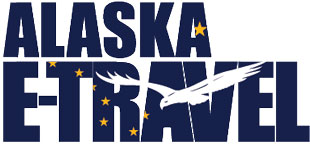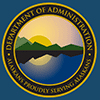
Travel
E-Travel News
November 2019 - Volume 11, Issue 6
In This Issue
- Traveling during Winter Weather
- AAM 60 Updates [Travel, Moving, Fringe Benefits]
- FY 2020 Q1 Travel Savings Report
- Tips for Staying Healthy Onboard
Traveling during Winter Weather
As the snow begins to fly and planes are left grounded, winter travelers should be prepared for delays and cancellations.
When a flight is cancelled, the carrier will re-accommodate ticketed passengers on the next available flight. In most cases, the carrier will not charge for the change unless the traveler does not accept the carrier’s proposed itinerary.
When Corporate Travel Management (CTM) is contacted and asked to re-accommodate, they work directly with the carrier on behalf of the traveler. However, the travel agency is bound to carrier rules and restrictions and they are paid for their service.
Travelers are encouraged to contact CTM to make all state-related changes. It is, however, within state policy for the traveler to work directly with the carrier in an emergency Check with your Travel Administrator for department specific guidelines.
Our dedicated CTM agent team is available 5 days a week, from 8:00 a.m. to 5:00 p.m., with after-hours service for emergencies. Contact information is located on the travel itinerary and for travelers using TripCase, there is a link to call CTM directly in the mobile application.
AAM 60 Updates [Travel, Moving, Fringe Benefits]
Effective October 1, 2019, the following sections within the Alaska Administrative Manual were revised.
- Travel -
- AAM 60.020 – Travel Definitions. The definition of M&IE and Per Diem have been updated. Limiting the incidental portion of these reimbursements to expenses related to meals and lodging. Laundry and other personal expense may still be reimbursed at the discretion of the department and reimbursed as miscellaneous expenses.
- AAM 60.030 – E-Travel. Updated hyperlink to Traveler profile instructions document.
- AAM 60.060 – Payment Methods for Transportation and Expenses. Updated reference from EDI to EFT.
- AAM 60.250 – Meals and Incidental Expense Allowances. Updated language to clarify what can be considered an Incidental Expense.
- Moving -
- AAM 60.310 – Introduction to Moving Expenses. Updated language to clarify that all moving expense payments are reportable per IRS regulations.
- AAM 60.325 – Taxability of Moving Expense Reimbursements. Updated language to clarify that all moving expense payments are reportable per IRS regulations.
- Fringe Benefits -
- AAM 320.110 – Accounting for Taxable Travel. Corrected business expense balance sheet account used for coding travel expense earnings and deduction transactions.
- AAM 320.200 – Moving Reimbursements. Updated language to clarify that all moving expense payments are reportable per IRS regulations.
- AAM 320.300 – State Vehicle Usage. Updated maximus employee compensation for which the IRIS commuting valuation rule can be applied per the 2019 IRS Publication 15-B.
FY 2020 Q1 Travel Savings Report
The E-Travel cost savings report for FY2020 Quarter 1 (Q1) is posted on the travel website on the Statewide Travel Office Cost Savings Analysis webpage. The report totals reflect statewide data, including Medicaid, but each department has a detailed tab.
The methodology used to report contract savings compares contract prices to published prices. Other savings are reported under managed savings and include special group fares, vouchers, unused ticket tracking, and waiver favors obtained by CTM. The calculated net benefit equals the contract savings plus managed savings, less expired tickets, higher fare tickets (refundable and first class), service fees, and E-Travel Office Operational Costs.
Tips to increase your department’s cost savings:
- Book in E-Travel Online without agent assistance when possible.
- Book contracted vendors to consolidate volume to State partners.
- Avoid unnecessary itinerary changes by reviewing travel details thoroughly before submitting for purchase.
- Take advantage of CTM’s unused ticket automation to ensure transferable funds are utilized before expiring.
- Get approval for travel as soon as possible to take advantage of advanced ticket fares. Historical data shows the best ticket prices are purchased between 14-21 days in advance of travel.
Questions regarding travel program or savings reports can be directed to the ETMT.
Tips for Staying Healthy Onboard
More than 1 in 5 people who travel on planes will suffer from a cold or flu after the flight, making your odds on a full plane nearly inevitable. However, if you take precautions to keep healthy you the odds may be in your favor.
Here are a few tips for staying healthy at 40,000 feet.
Avoid germs onboard
- A University of Alabama study found that some germs can stay up to 7 days on a plane. Pack wipes and hand sanitizer. Wipe down the tray table and armrests and open your air vent.
- Keep personal belongings out of the seat pocket. People use that “handy” little pocket for dirty tissues and used diapers (YES, just ask a flight attendant).
- Avoid touching surfaces in the bathroom. Bring a pack of wipes to clean up before and after.
Pack small snacks with big nutritional value
- Instant oatmeal is high in fiber and protein; just ask the flight attendant for hot water.
- Raw vegetables, like carrots and jicama sticks with hummus, are low in calories, bursting with vitamins, and the crunchiness helps with popping ears.
- A bagel with cream cheese is high in fiber and carbohydrates to keep you feeling full for a long time. In addition, carbohydrates stimulate serotonin production, which can help lessen anxiety and promote sleep.
- Clementine oranges are protected by the peel, instantly refreshing, and packed with vitamin C, which provides a nice boost to the immune system at a time when you need it most. Put a few in a sandwich bag with a wet paper towel and you have a place to put the peels and wipe your hands when finished.
- Avoid salty foods as they can speed up dehydration and please leave the stinky cheese and hardboiled eggs at home!
- Bring your own water bottle and fill it before each leg of travel. It is recommended to drink at least 8 ounces of water during every 1 hour of flight.
Close your activity rings
- Get up and move around the cabin as much as you can.
- Improve circulation by rotating your wrists and ankles in a circular motion, reverse direction, and repeat.
- Stretch your spine by reaching both arms forward, left wrist under right and twist until your hands are touching at the palms. Slide both arms up towards the ceiling, hold, and repeat.
Dress smart
- Try support or compression socks to promote blood circulation to help prevent swelling of feet and legs.
- Dress in layers and wear breathable fabrics like cotton, silk, or linen. When choosing layers, consider the possibility of delays.
- Pack a sleep mask, headphones, and Chapstick.
- Most importantly, get sleep and stay hydrated!
